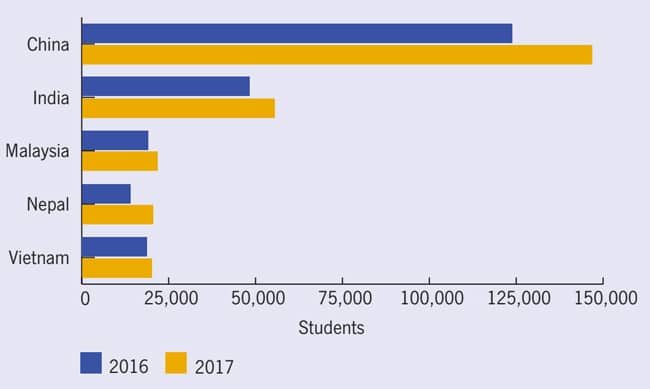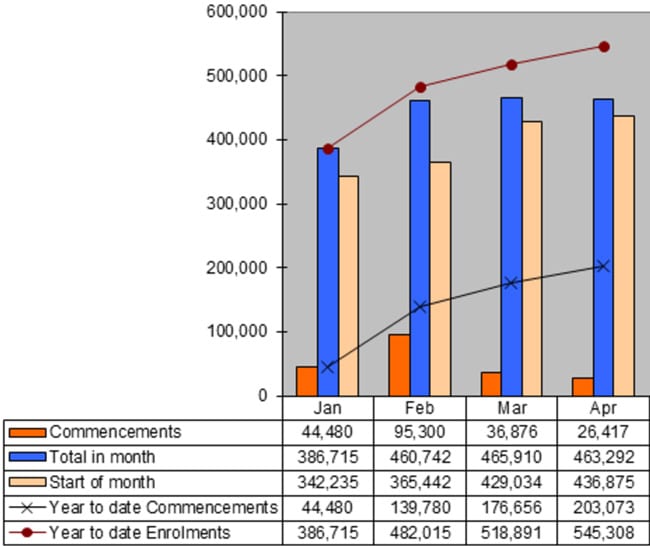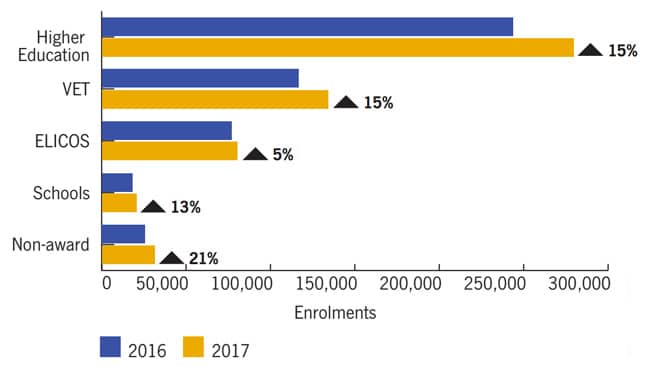Australia tracking to double-digit enrolment increase for 2017
The earlier indicators we’ve had of lively growth in international enrolment in Australia are being reinforced by the latest data from the Department of Education and Training (DET).
The most recent DET data release, for year-to-date April 2017, indicates a 14% increase in student numbers compared to the same period in 2016. This translates to a reported enrolment base of 492,964 foreign students in the country as of April 2017, with each of the top five source markets – China, India, Malaysia, Nepal, and Vietnam – contributing to that continuing growth this year. In combination, those top-five markets represent more than half (53%) of all international enrolment in Australia.


Enrolment by sector
For the most part, the enrolment growth for YTD April 2017 is broadly distributed across all education sectors with most recording strong double-digit growth through the first four months of the year. (As always, please note that DET values for “enrolments” will always be higher than for “students” as some students will register for more than one programme over the course of the calendar year. For YTD April 2017, DET reports a total of 545,308 international enrolments relative to the 492,964 students we noted above.)

Getting ready for further growth
Hot on the heels of this latest trend data, Australia’s Minister for Education and Training Simon Birmingham recently announced an additional AUS$3.6 million (US$2.8 million) in funding to support early stage implementation of Australia’s National Strategy for International Education 2025. “This funding will support 14 innovative projects to help strengthen and grow Australia’s booming international education sector,” said the Minister. “From support for think tanks, international collaborations and conferences through to backing initiatives that boost student internships and raising the profile of our English language training, these new projects focus on enhancing the experience of international students studying in Australia.” “We’re also expanding the international student survey we undertake every two years to capture information about graduate employment outcomes, as well as increasing the reach of the survey to include students who study Australian courses offshore and online.” Australia’s national strategy is a comprehensive ten-year blueprint for the expansion of the country’s international education sector. Among other key goals, the strategy aims to expand onshore foreign enrolment to 720,000 students by 2025. For additional background, please see:
















